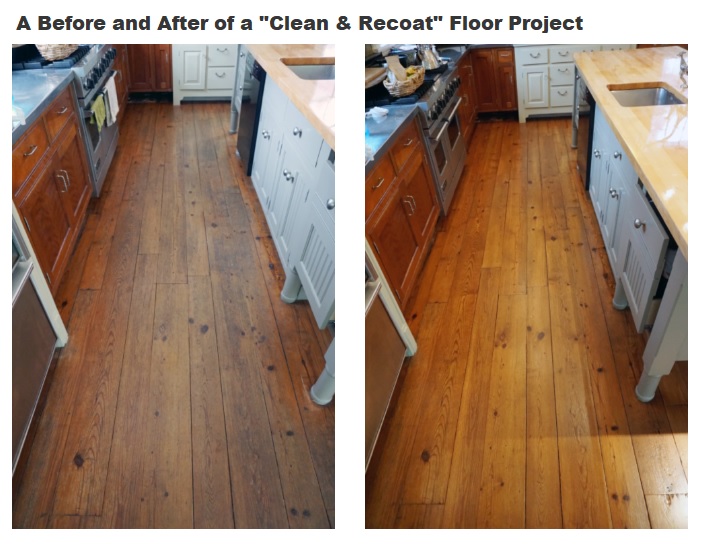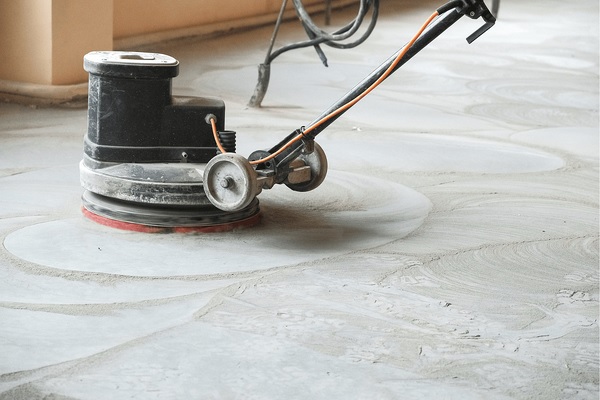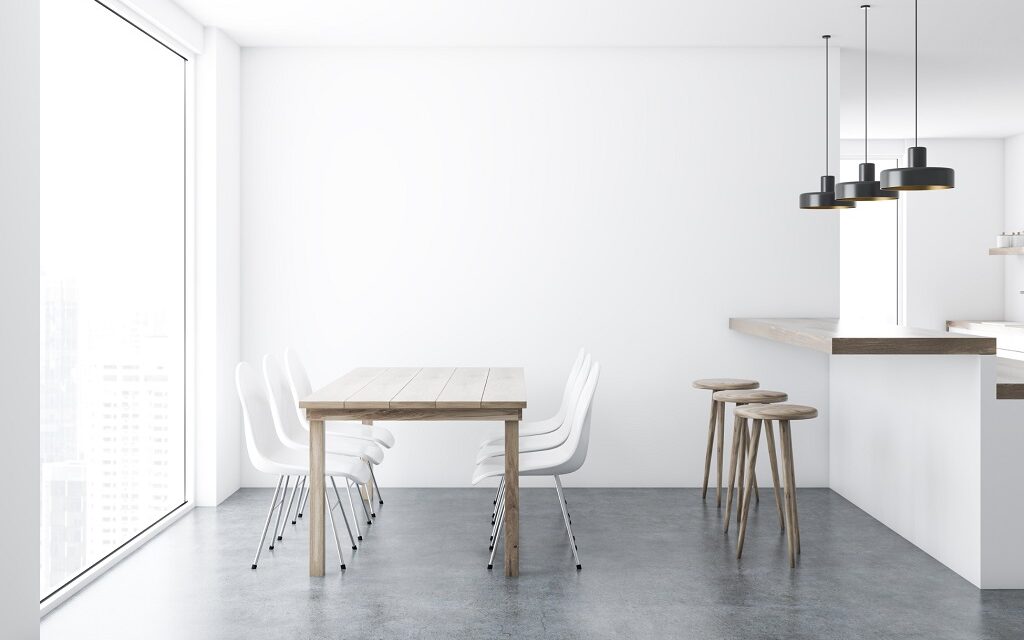If you’re like most homeowners, you probably don’t think about your flooring until there’s a problem. It is when an issue arises, you realize that it can be difficult to know where to turn for help. If your floors are in need of restoration, you’re in luck! There are now more residential floor restoration choices than ever before.
In recent years, advances in floor restoration technology have made it possible to restore all types of floors, from hardwood and laminate to tile and stone. The applications for these technologies are constantly expanding. For example, one popular new application is floor refinishing. This process uses a specialized machine to sand down the top layer of your flooring, revealing a fresh layer of wood or other material beneath.
In this article, we discuss the latest advancements in floor restoration technology and how they can benefit you. We also provide tips on choosing the right contractor for the job, so you can become more knowledgeable and better prepared to make better choices for your flooring needs.
Table of Contents
- The Benefits of Floor Refinishing
- Floor Refinishing Options by Existing Floor Type
- Flooring Options by Replacement Material Type
- Tips on Choosing the Right Flooring Contractor
- Closing Thoughts
- Flooring Refinishing & Restoration Resources
Also see:
The Benefits of Floor Refinishing
As we mentioned, one of the latest trends in floor restoration is refinishing. This process can be used on all types of floors, from hardwood to laminate. Floor refinishing is a great way to refresh your floors without having to replace them entirely.
There are two main benefits of floor refinishing. First, it can save you money and it can extend the life of your floors. For example, if your hardwood floors are starting to show wear and tear, you may be tempted to replace them entirely. However, with floor refinishing, you can simply have the top layer sanded down, revealing a fresh layer of wood beneath.
Second, refinishing can also give your floors a completely new look. If you’re tired of the same old flooring, refinishing is a great way to change things up. You can choose from a variety of colors and finishes, giving your floors an entirely new aesthetic.
Floor Refinishing Options by Existing Floor Type
- Wood
- Natural Stone
- Concrete
Passive Refinishing
Passive Refinishing is a trademark of The Rosebud Company, a specialist in refurbishing historic wood floors. Their approach to refinishing wood floors safely is invaluable for homeowners so that they can understand their options on how to best restore older, more delicate and worn wood floors.
The general approach to passive refinishing is to refrain from aggressive sanding of the wood, while focusing on removing the top, accumulated surface that can consist of: finishes; waxes; patch materials; and residual maintenance products. In other words, when dealing with wood floors you want to go after the old coating, while leaving the good wood alone, as much as possible.

Photo courtesy of The Rosebud Company.
This is where the right tools and their precise application by an experienced professional can make all of the difference in both the final finish and lifespan of the underlying wood.
Here is an instructional video that explains the approach of Passive Refinishing by Michael Purser, the owner and founder of the Rosebud Company, when dealing with older wood floors.
Epoxy Technology Coating
One of the latest trends in flooring is epoxy technology coatings. This type of coating is applied to concrete floors in order to protect them from wear and tear. Epoxy coatings are also available in a variety of colors, so you can customize the look of your floor. You can choose from a high-gloss finish or a matte finish, depending on your preference.
There are many benefits to using epoxy technology coatings on your floors. First, they are extremely durable and will last for years with proper care. Second, they are easy to clean and maintain. Third, they resist staining and fading, so your floors will always look new. Fourth, they can be used in both residential and commercial applications.
Concrete Flooring Resurfacing
Another popular option for floor restoration is concrete floor resurfacing. This process involves grinding down the top layer of concrete to reveal a new, fresh surface beneath, then repainting or applying a new layer of concrete on the old concrete. It is an ideal solution for floors that are damaged or stained. Resurfacing can also be used to change the color or finish of your concrete floors.

Photo courtesy of Onfloor.
There are many benefits to resurfacing your concrete floors. First, it is an affordable option compared to replacing your floors entirely. Second, it is a quick and easy process that can be completed in a matter of days. Third, resurfacing will add value to your home or business. And lastly, it is a great way to update the look of your space without making major changes.
Also see:
Floor Coating
Another popular trend in floor restoration is the use of floor coatings. Floor coatings are applied to both wood and concrete floors in order to protect them from wear and tear. They are also available in a variety of colors, so you can customize the look of your floors.
Floor coatings are made up of a variety of different materials, including:
- Epoxy
- Polyurethane
- Acrylic
Each type of material has its own set of benefits. For example, epoxy is extremely durable and resists staining and fading. Polyurethane is also very durable and offers a high-gloss finish while providing protection from ultraviolet damage. Lastly, acrylic is less expensive than both epoxy and polyurethane, but still offers a high-quality finish.
Natural Stone Restoration
Natural stone floors are a beautiful addition to any home. They are durable and easy to care for, but they do require some regular maintenance. Stone floors should be swept and mopped on a weekly basis to remove dirt and debris. You may also need to occasionally seal or polish your floors to protect them from stains and damage.
If you have natural stone floors, it is important to be aware of the signs of wear and tear. If you notice cracks, chips, or scratches in your flooring, fill them in as soon as possible to prevent further damage. You should also have your floors professionally cleaned and sealed every few years to keep them looking their best.
When it comes to natural stone restoration, there are a few things you can do yourself, but it is always best to hire a professional. They will be able to properly assess the damage and determine the best course of action. Professional stone restoration companies will also have the necessary equipment and experience to get your floors looking new again.
Flooring Options by Replacement Material Type
If you decide that refinishing is not an adequate solution for your existing flooring. Here is a helpful summary of benefits and traits of leading flooring materials.
Recycled Materials
If you’re looking for a more environmentally-friendly option in your floor restoration project, consider using recycled materials. Recycled materials are a great way to reduce your carbon footprint and save money. There are many different types of recycled flooring available on the market today, including bamboo, cork, and linoleum.
Bamboo floors are made from the bamboo plant, which is a fast-growing grass that doesn’t require the use of pesticides or fertilizers. Cork floors are made from the bark of the cork oak tree. And lastly, linoleum floors are made from natural materials like limestone and linseed oil. All three of these raw materials are durable, eco-friendly, and stylish.
When you’re ready to start your floor restoration project, consider using recycled materials. They are a great way to be environmentally responsible and save money.
Engineered Floors
Engineered floors are another popular option for floor restoration. This type of flooring is composed of multiple layers of wood, plywood, or laminate. The top layer is typically a hardwood veneer that can be sanded and refinished.
There are many reasons why homeowners opt for engineered floors. First, they are well-known for their durability and will last for years with proper care. Second, they are low-maintenance and easy to clean. Third, they resist staining and fading, so your floors will always look new.
The surface of engineered floors looks like real wood, only that it is low-cost, so it is more affordable than actual solid wood. It’s also popular among DIYers as the installation is fairly easy for non-professionals.
Laminate Floors
Laminate flooring is a cost-effective alternative to carpet for homeowners who want to avoid the expense of hardwood or tiles, but still want a durable, low-maintenance surface.
The floors are made of a particleboard wood base topped by a clear plastic protective layer, which is then covered with wood or tile photos. This flooring is extremely easy to install yourself plus, laminate comes in a variety of textures and colors, so you can find one that looks just like tile, stone, or a wood floor.
The main advantages of laminate floors are that they are durable, easy to care for, and stain-resistant. They are also a great option for a house that gets a lot of traffic or moisture because they will not warp or buckle over time.
Vinyl Floors
Vinyl floors are a popular choice for residential and commercial applications. They are made from a variety of materials, including PVC, linoleum, and rubber. Vinyl floors are available in a wide range of colors and styles, so you can find one that matches your home décor. Vinyl floors are easy to install and maintain, while also being waterproof, so they are ideal for areas that are prone to spills or moisture.
Retailers now carry luxury vinyl planks (LVP) and luxury vinyl tiles (LVT) that appear so much like wood or stone, it is often difficult to tell the difference. The good news is that they are a fraction of the price and are easier to install.
Tile Floors
Tile floors are a popular choice for kitchens and bathrooms because they are durable and easy to clean. Tile comes in a variety of materials, including ceramic, porcelain, and stone. In fact, wood-looking tiles are now available that offer the natural beauty of hardwood floors with the durability of tile.
Tile floors are a great choice for high-traffic areas because they can withstand a lot of wear and tear. They are also waterproof, and thus low maintenance, making it ideal for areas that are prone to spills. In fact, wood tiles are also popularly used on walls, countertops, and backsplashes, so you have the freedom to create a cohesive look throughout your home.
In terms of maintenance, tile floors are easy to care for. You can sweep and mop them on a regular basis to keep them looking clean and new. If a tile does get damaged, it is also easy to replace without having to replace the entire floor. You just need to be careful with the grout as it can be susceptible to staining and mold.
Tips on Choosing the Right Flooring Contractor
If you’re interested in refinishing your floors, we recommend that you hire a professional contractor. This is typically not a job that should be attempted by amateurs. A professional contractor will have the necessary equipment and experience to perform the job correctly.
To find a reputable floor refinishing contractor in your area, we recommend conducting an online search or asking for recommendations from friends, family, neighbors and members of the trade whom you trust, who have been satisfied with their flooring contractor.
Be sure to take advantage of free estimates from at least three contractors, so that you can analyze and compare not only their fees, but their different approaches, as well.
We would assign more weight to prospective contractors who have done similar work as what you will need. For example, if you have concrete flooring, we strongly recommend seeking a concrete specialist. Historic restoration of wood flooring is another example where it is imperative to hire a known expert in the field.
When discovering a strong candidate for your project, we also recommend being patient and flexible with scheduling. If you can live with your situation in the short-term, we strongly recommend waiting for the best candidate to be available for your job. This means booking them immediately, even though the project start date may be several weeks or months in the future.
To help assuage your impatience, keep in mind that the best contractors are always in high demand (i.e. fully booked and unavailable), whereas lesser qualified contractors are typically readily available to start work immediately.
Here are some professional flooring directories and resources to assist your contractor search, as well:
- Directory of National Wood Floor Association (NWFA) Certified Professionals
- Why Hire an NWFA Pro?
- Manufacturers Who Endorse NWFA Certified Professionals
- The Flooring Contractors Association
- Certified Flooring Installers (CFI)
- World Floor Covering Association (WFCA) Dealer Locator
Also see:
- How to Choose a Qualified & Trustworthy Contractor
- How to Increase Your Chances of Hiring a Good Contractor
Closing Thoughts
When it comes to floor restoration, there are a variety of options from which to choose. It is important to consider your needs and budget when making a decision and options for maintenance and care. If you are looking for a durable, easy-to-care-for flooring option, laminate, vinyl, or tile floors are a great choice.
If you want a floor that is easy to maintain but also has natural beauty, stone floors are a good option. Whatever type of flooring you choose, be sure to invest in proper care and maintenance to keep it looking its best for years to come!
Flooring Refinishing & Restoration Resources
- Glossary of Flooring Terms
- National Wood Flooring Association (NWFA) Homeowner Resources
- Lightspeed® Instant-Cure Wood Refinishing
- The Rosebud Company: Restoration of Historic Hardwood Flooring
- Floor Trends: Directory of Manufacturers and Distributors of Wood Flooring Products
- Floor Trends: New Product Showcase
Recommended Reading
- A Before vs Virtual vs Real Life Renovation Case Study
- 5 Examples of Older Homes Returning Maximum Profit with Renovations
- How to Sell Your Home for Maximum Profit with Revive
- What is a Turnkey Home in Today’s Market?
- Need Renovation Inspiration? Try These Innovative Design Resources!
| Purgula is reader-supported. When you click on links to other sites from our website, we may earn affiliate commissions, at no cost to you. If you find our content to be helpful, this is an easy way for you to support our mission. Thanks! Learn more. |







